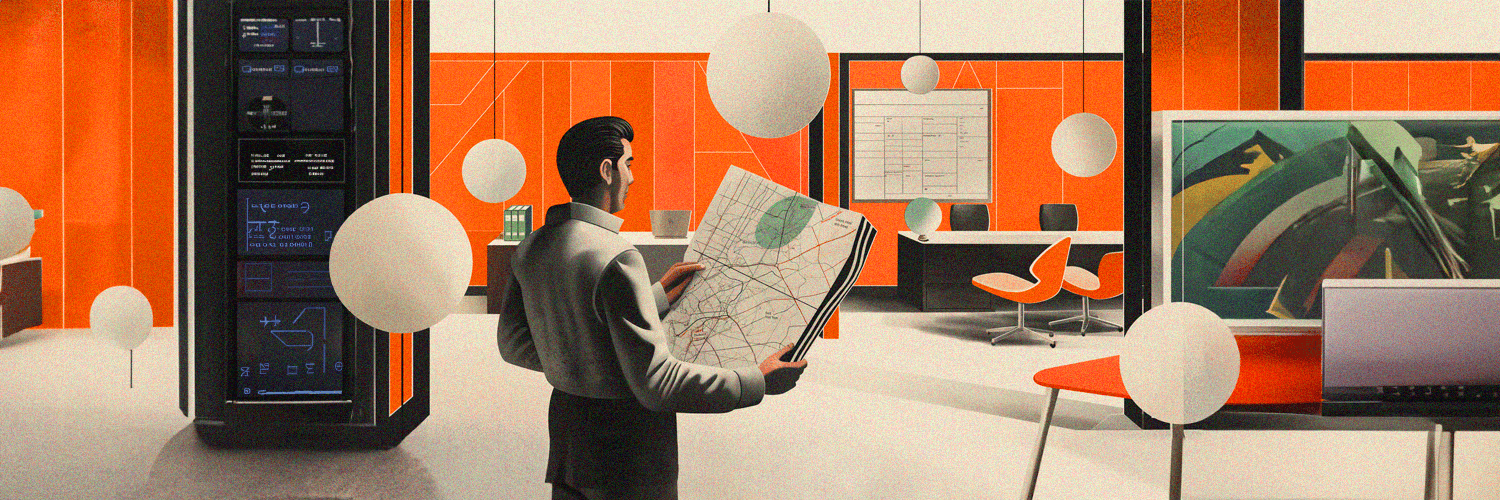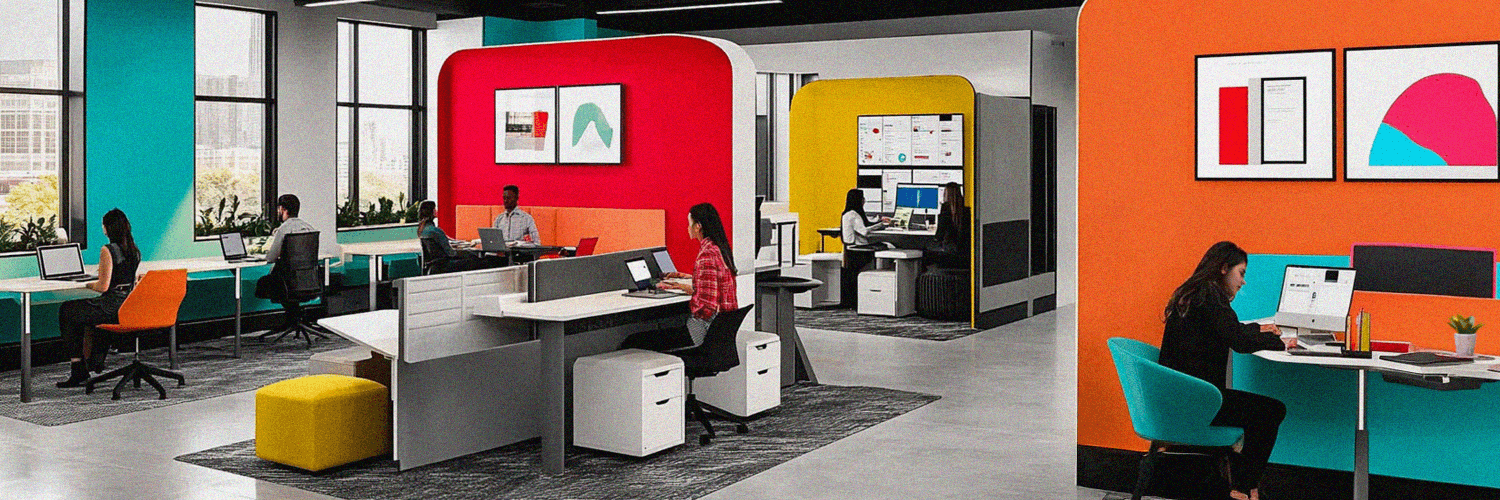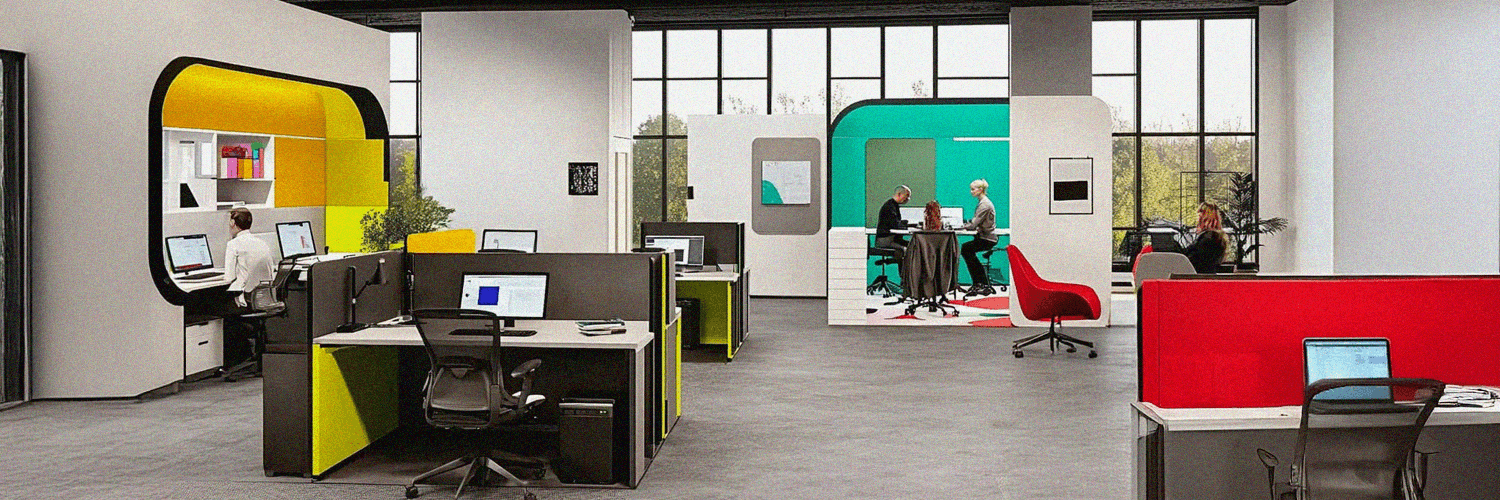Visual communication in the workplace can make the difference between a person coming in for an interview and getting lost and someone who finds their way as soon as they walk in the door. And that's not even by far the only benefit: having strong visual communication skills can help you stand out amongst a crowd of applicants and make an immediate impact on your potential employer.
These are not just fluff benefits: they tap directly into how people buy from you, how employees perceive you, how walk-in customers think of your business, how efficient people are when they’re at work, how creative their problem-solving, and so on.
How to use visual communication in the workplace?
Keep reading and find out more.
TL;DR:
- Visual communication helps with navigation and ease in the workplace, guiding individuals efficiently.
- It can help you build a better employer brand, provide a better customer experience for visiting customers, and create a better impression on potential applicants.
- It is not just about making things look nice, but also about conveying important information effectively and efficiently.
- Visual communication can also enhance productivity and creativity, allowing for better collaboration and problem-solving.
- It is essential to balance different forms of communication, including verbal, written, and visual, in the workplace.
- Good technology can help you make better use of visual communication tools and strategies.
Visual Communication in the Workplace: What It’s All About?
In short, visual communication in the workplace refers to how you use different visual devices and tactics to relay important messages like:
- Your office layout
- Where everyone is in the office
- Important data
- How different issues can be addressed
- Safety & security measures
- …And so on
Examples of Visual Communication in the Workplace
There are many ways to think of visual communication in the workplace. Some of them include:
- Helping visitors find the right office or person with wayfinders
- Making it easy for employees to navigate the office
- Improving security by preventing confused people from entering the wrong rooms
- Creating an inclusive and welcoming environment for all employees
- Displaying important information in a clear and engaging manner
- Using visual aids during presentations and meetings to enhance understanding
- Helping you better plan your office space by using visuals such as floor maps and organization charts
- Helping your employees be more creative, better critical thinkers, and, ultimately, better problem-solvers by using visual tools to convey complex information
- Building a strong employer brand identity through consistent use of visual elements in all internal communications
- Enhancing teamwork and collaboration by visually representing ideas and concepts visually
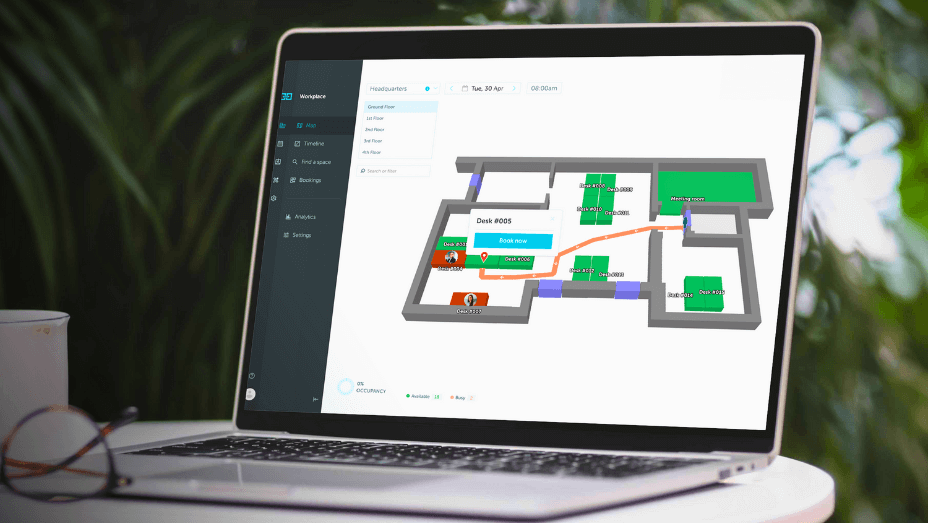
Why Visual Communication Matters in the Workplace
Visual communication might not seem like that big of a deal, but it can make a world of difference. Some of the main benefits of using visual communication include:
Enhanced Communication Effectiveness
Visual communication in the workplace significantly enhances the effectiveness of information delivery, ensuring that messages are understood more quickly and retained longer. It transcends language barriers and caters to diverse learning styles, making it a universal tool for clearer and more impactful communication.
Keep in mind: human brains get visual information a lot faster than they do text: 60,000 times faster, to be more specific. So, naturally, a visual communication system will likely be a lot more effective than written notes.
Information Retention
Not only do we process visual information faster, we also retain it better. We learn 400% times faster with visual information, so incorporating visuals into the workplace communication can lead to better information retention among employees. This is especially important when it comes to training and onboarding new employees, as they are bombarded with a lot of new information and visuals can help them better understand and remember key concepts.
Increased Engagement and Understanding
Utilizing visual elements in the workplace not only captures attention but also significantly amplifies engagement among employees. This increased focus leads to a deeper understanding of the presented materials, fostering a more collaborative and efficient work environment.
Better Employee and Visitor Experience
Imagine landing in a medical office or attending an interview and getting lost for ten minutes before the actual appointment. Not only does this create unnecessary stress, but it also gives off the impression that the organization is not well-organized. With visual communication aids such as wayfinders and maps, employees and visitors can navigate through the workplace with ease, resulting in a positive experience.
How to Implement Visual Communication in the Workplace
The good news about all this is that implementing visual modes of communication in the workplace isn't hard. Here are some ways you can do it:
Onboarding New Employees through Visual Aids
Onboarding with a new company is stressful enough as it is. The last thing your new employee needs is to be bombarded with a lot of information during their first week. Make it easier for them by incorporating visual aids such as infographics and videos into the onboarding process, so they can better understand company policies, procedures, and expectations.
Use Visuals to Inspire Creativity
The human brain is largely a marvel, even today.
Yet, what we do know is that visual devices such as mind maps or brainstorming boards can help engage employees' creativity and enhance critical thinking. These tools help to stimulate and organize ideas, making problem-solving more efficient.
Efficient Note-Taking through Visuals
Note-taking is a critical part of any meeting or presentation, but it can be challenging to keep up with all the information being shared. Visual aids such as sketches and diagrams can help you capture key points quickly and effectively. Plus, they make for an interesting way to review your notes later.
Providing Clear Feedback Visually
Visual feedback mechanisms like charts, graphs, and color-coded systems offer an intuitive and impactful way to deliver performance reviews or project updates. They allow both employees and managers to immediately grasp successes and areas for improvement, fostering a culture of clear, constructive communication.
Adopting Wayfinding Technology for Easy Navigation
Adopting wayfinding technology in the workplace simplifies navigation because it uses digital signs, interactive maps, and mobile app integrations, making it easier for both employees and visitors to find their destinations without confusion.
This technology not only enhances the overall experience but also contributes to a more efficient and productive work environment by saving time that might otherwise be spent in orientation.
For example, Yarooms Workplace Experience Platform offers modern tools for efficient wayfinding with signage, color coding, and different graphics -- all so you can have an organized and easy-to-navigate workplace.
Leveraging Interactive Office Floor Maps
Interactive office floor maps make your workplace feel like a seamless experience. It can include real-time data and navigation features that direct employees to available meeting rooms, restrooms, or other designated areas. This cutting-edge technology alleviates any confusion or frustration caused by navigating through a new workplace.
Yarooms can help with that as well -- our software allows you to build interactive office maps that show available workstations and specific locations within your facility, as well as showcase safety and health measures.
Monitoring and Reporting Progress with Visual Data
Visual data is an incredible tool for progress monitoring and reporting in the workplace. From sales numbers to project timelines, visual representations of data allow for quicker analysis and more effective communication about performance and goals. This transparency can also promote a sense of accountability among team members, leading to increased productivity and efficiency.
Ways Visual Communication Supports a Positive Work Culture
Building a positive work culture is the cornerstone of productivity. A staggering 95% of employees think culture is better than compensation -- and it can all translate into customer satisfaction levels 30% times higher in organizations that value a positive environment,
While not the only element that supports positivity at work, visual communication is a powerful tool in building and maintaining a work culture that emphasizes transparency, collaboration, creativity, and efficiency. Here are some of the benefits of visual communication in this regard:
Supporting Brand Identity with Visual Elements
Visual elements such as logos, color schemes, and design templates are essential in establishing brand identity. By incorporating these elements into internal communications, employees feel more connected to the company's vision and values, promoting a sense of belonging and pride in their work.
Unifying Workplace Environment with Visual Strategies
Visual strategies in the workplace, such as consistent design themes and signage, can tremendously help in creating a unified and cohesive environment. These strategies not only facilitate easier navigation but also contribute to a more visually appealing and professional workspace.
Leveraging Visual Tools for Organizational Change Facilitation
Organizational change can be a complex and challenging process, but leveraging visual tools like flowcharts, diagrams, and interactive presentations can significantly ease the transition. These tools provide a clear, immediate understanding of new processes, roles, and goals, facilitating better acceptance and implementation across the board.
Ensuring Consistent Brand Experience
Ensuring a consistent brand experience across all touchpoints is vital for maintaining customer trust and loyalty. Visual communication tools contribute significantly by aligning all visual elements, from marketing materials to internal communications, thereby reinforcing the brand's identity with every interaction.
Streamlining Navigation and Visibility across the Office
Streamlining navigation and visibility in the office with visual cues not only saves time but also reduces stress for employees and visitors alike. This approach ensures that everyone can find their way easily, contributing to a more efficient and harmonious workplace environment.
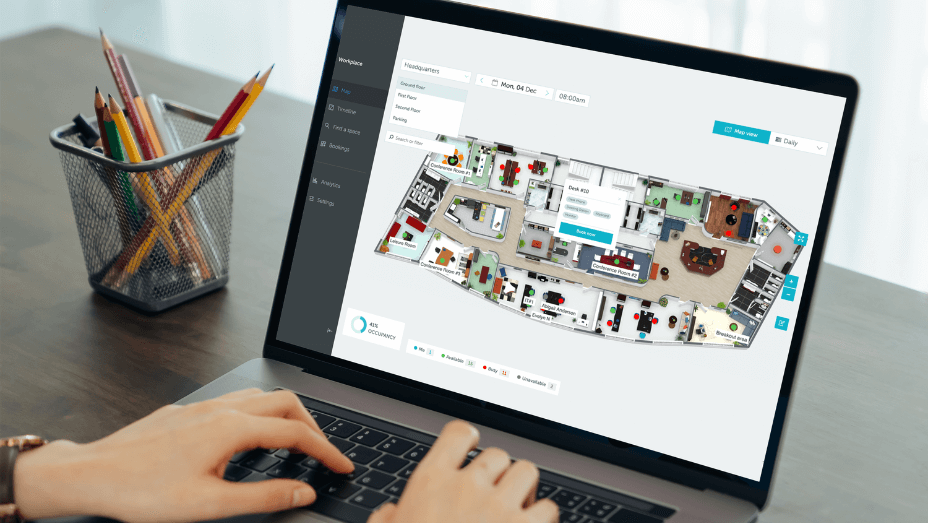
Best Practices for Effective Visual Communication in the Workplace
Effective visual communication isn't hard to achieve in the workplace, especially when you have the right tools. Here are some of the best practices to keep in mind if you want to reap off all the benefits of visual communication:
- Use consistent visual elements, such as color schemes and fonts, across all communications to establish a strong brand identity.
- Make sure your visuals are easy to understand by using clear and concise language, minimal design clutter, and user-friendly navigation features.
- Leverage technology like digital signage and interactive maps to enhance the overall experience for employees and visitors in the workplace.
- Regularly review and update your visual communication strategies to ensure they align with your company's objectives and values.
- Encourage employee feedback and collaboration on visuals to promote a sense of ownership and pride in the workplace.
Challenges in Adopting Visual Communication Strategies at Work
While visual communication can be highly beneficial for any workplace, there are also some challenges you should be aware of
- Lack of resources: Investing in the technology needed for effective visual communication can be costly, especially for smaller businesses. To overcome this challenge, consider using more affordable options like digital signage software. For instance, Yarooms has affordable pricing plans tailored to fit your business's needs -- and for the money, you get more than visual communication tools. You get a full system ready to support hybrid and flexible work, from desk scheduling to measuring CO2 emissions for a more sustainable workplace.
- Resistance to change: Some employees may be resistant to adopting new technologies and strategies, especially if they are already comfortable with existing methods. To overcome this challenge, provide thorough
- Accessibility concerns: Not all employees may have equal access to visual communication tools and materials, such as those with visual or hearing impairments. To ensure inclusivity, make sure to provide alternative means of communication and accommodations for employees who may need them.
- Overusing visuals: While visuals can be a powerful tool in communication, using too many visuals can cause information overload and create confusion among employees. It is essential to strike a balance between text and images to effectively convey your message.
Measuring the Impact of Visual Communication on Workplace Efficiency
If you want to see the results of your visual communication strategy, you need to measure its impact. And the best way to do that is by looking at how it affects workplace efficiency. Here are some key metrics to consider:
- Employee engagement: Are your employees more engaged and enthusiastic about work since implementing visual communication? If so, this could be a good indicator of improved workplace efficiency.
- Time management: Has there been an increase in productivity or a decrease in time spent on tasks since incorporating visuals into internal communications?
- Navigation and wayfinding: Have employees reported finding their way around the workplace more efficiently since implementing visual cues? This could be an indication of improved navigation and visibility.
- Feedback and collaboration: Are employees actively providing feedback, collaborating, and taking ownership of visuals in the workplace? This can indicate a sense of community and engagement, which can contribute to overall efficiency.
- Cost-saving: Have you been able to save costs on printing and other communication materials since implementing digital signage or other visual tools? This can be a tangible measure of the impact of visual communication on workplace efficiency.
Summing it Up: The Value of Visual Communication for Modern Workplaces
They say the devil is in the details -- but most times, so is the solution. That's why it's essential to pay attention to visual communication in the workplace, where details can make all the difference.
From creating a consistent brand experience and streamlining navigation to promoting employee engagement and improving efficiency, visual communication has many benefits for modern workplaces.
Are you ready to start implementing visual communication tactics in your workplace?
